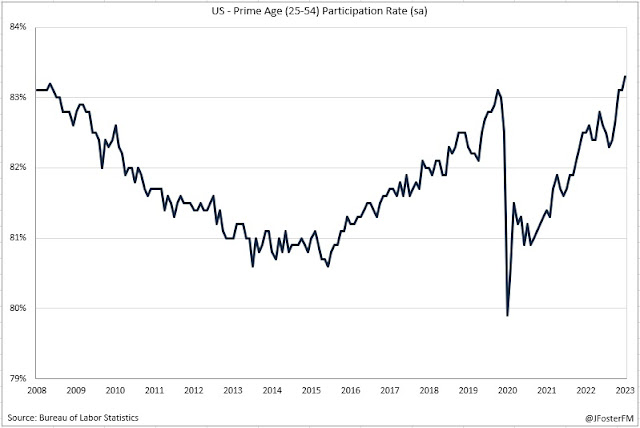Central banks across the US, Europe and Australia all hiked rates this week, though each with differing narratives suggesting this extended phase of policy tightening is starting to become less synchronized. Concerns relating to the US regional banks look likely to have put an end to rate hikes from the Fed. In contrast, the ECB signalled it will continue to tighten. In Australia, the RBA hiked against expectations and may not be finished yet.
Fed set to pause...
The Federal Reseve's tightening cycle has come to a key juncture following this week's 25bps hike, with a pause now more likely than a hike as the next move. This follows what Chair Jerome Powell described in the post-meeting press conference as a "meaningful change" to the FOMC's policy guidance. In effect, the changed guidance change signals the FOMC is no longer minded to hike further, though it has kept that door ajar should the incoming data warrant tightening. Now at 5-5.25% on the fed funds rate, the FOMC removed the reference to hiking to a "sufficiently restrictive level" - a mainstay in its communications since late last year - as the policy rate came into line with members' median projection for the peak rate.
Now in a data-dependent mode, the FOMC is watching the US banking system as much as anything else, with the regional banks remaining under pressure from deposit outflows. Chair Powell said that credit tightening was expected on the back of these stresses and that would add to the restrictive impulse to the economy coming from rate hikes and QT. Against those headwinds, the labour market remains in robust shape. Nonfarm payrolls lifted by 253k in April to surge past the 185k increase expected. That drove the unemployment rate down to a 54-year low of 3.4% (from 3.5%). While the participation rate was unchanged overall at 62.6%, the prime-age category lifted to 83.3%, surpassing its pre-pandemic level. Improved labour supply has likely been a factor behind average hourly earnings growth slowing from a pace of around 6% a year ago to 4.4%yr in April.
as the ECB signals it will go further...
The ECB continued to hike rates this week and, with headline inflation firming to 7%yr in April and the core rate looking sticky at 5.6%yr, signalled it still had work to do. But there were indications that the tightening cycle is nearing the end. The 25bps hike announced by the Governing Council was its slowest hike in the current cycle that has seen the depo rate rise rapidly to 3.25% from -0.5% last June.
In the post-meeting press conference, President Christine Lagarde said that the ECB's bank lending survey - which reported credit standards had "tightened further substantially" in Q1 - warranted the step down in the pace of hiking. According to a Reuters article, the hawkish members on the Governing Council agreed to a smaller hike in exchange for communication that more hikes were required and the announcement to signal the end of reinvestments in the APP program in July, which Lagarde said would lead to around 25bn in maturing bonds rolling off the balance sheet per month.
while the RBA has turned hawkish again...
The RBA surprised many with its 25bps rate this week, lifting the cash rate to 3.85% (see here). While the RBA has maintained a hawkish stance since it began hiking rates a year ago, the tone of its narrative has swung around in 2023. The pause in April appeared to be predicated on the strategic view of allowing a gradual return of inflation to the 2-3% target in 2025 in order to preserve the employment side of its mandate, but it said this week that another hike was needed to ensure inflation returns to target "within a reasonable timeframe", wary of the overseas experience of stickiness in services inflation. In light of those concerns, the Board appears to have taken a more cautious outlook on inflation than that forecast by RBA staff in the Statement on Monetary Policy. The inflation forecasts were lowered slightly this year but still projected a 2025 return to the target band. The RBA's guidance is that further tightening "... may be required.." depending on how "the economy and inflation evolve".
Other highlights domestically this week included signs of a turn in the housing market, with housing prices rising 0.5% in April and lending commitments up 4.9% in March, their first increase since January last year (see here). Retail sales lifted 0.4% in March but were flat in Q1 as headwinds from rate hikes and cost of living pressures weighed on spending (see here). Meanwhile, the trade surplus widened to $15.3bn in March as exports were boosted by a rebound in iron ore shipments (see here).


